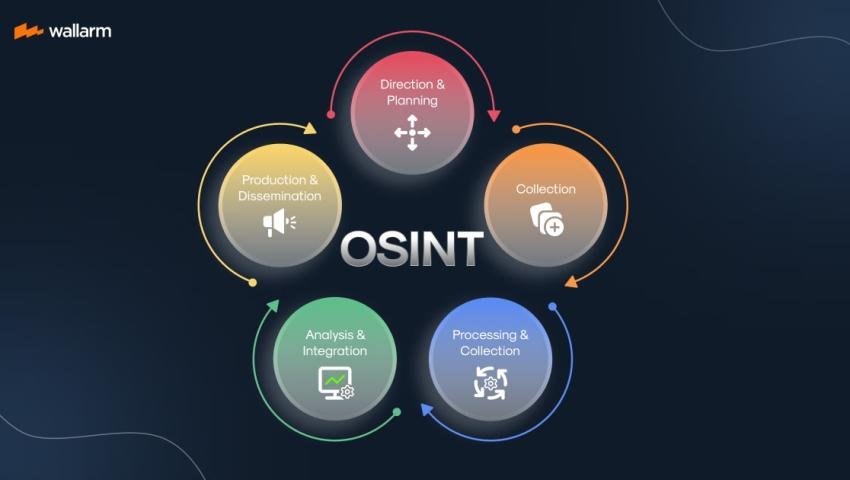
OSINT Tools for IP & Domain Investigation in Cybercrime Cases
OSINT involves collecting and analyzing publicly available information to produce actionable intelligence. For cybersecurity professionals, law enforcement, and ethical hackers, mastering OSINT tools for IP and domain investigation is not just a skill—it's a necessity.
Unmasking Digital Threats: A Guide to OSINT Tools for IP & Domain Investigation in Cybercrime Cases
In the digital age, cybercrime investigations often begin with a single, crucial clue: an IP address or a domain name. Whether it's a phishing website, a malicious server, or a source of harassing emails, these digital footprints are the starting point for any serious inquiry. This is where Open-Source Intelligence (OSINT) shines.
OSINT involves collecting and analyzing publicly available information to produce actionable intelligence. For cybersecurity professionals, law enforcement, and ethical hackers, mastering OSINT tools for IP and domain investigation is not just a skill—it's a necessity.
This guide will walk you through a structured approach and the essential tools needed to peel back the layers of anonymity and uncover the who, what, and where behind a malicious online presence.
The Investigation Framework: A Layered Approach
Before diving into the tools, it's crucial to have a methodology. A haphazard search will yield haphazard results. We recommend a layered approach:
Reconnaissance & Data Collection: Gathering all available public data about the target IP or domain.
Correlation & Analysis: Connecting the dots between different pieces of information to build a context-rich profile.
Attribution & Reporting: Synthesizing the findings into a clear, actionable intelligence report.
Layer 1: The Initial Reconnaissance - Domain & IP Lookup
This is the foundation. You need to answer the basic questions: Who registered this domain? Where is the server hosted?
1. WHOIS Lookup
WHOIS is a fundamental protocol that provides registration details for a domain name or IP address.
What it tells you:
Domain registrar and registration dates.
Registrant name, organization, email, and phone number (though often hidden by privacy services).
Name servers.
Key Tools:
DomainTools WHOIS Lookup: A industry standard with historical WHOIS data, which is invaluable for seeing past ownership information.
ICANN Lookup: The official authority for domain names.
WHOIS.net : A simple, straightforward tool for quick lookups.
Investigator's Tip: If the registrant uses "WHOIS privacy," don't stop there. Use the rest of the tools below to find other avenues of investigation.
2. Passive DNS History
Passive DNS databases store historical records of which domains have pointed to which IP addresses over time. This is critical for uncovering related malicious infrastructure.
What it tells you:
All domains that have shared the same IP address (neighbors on a shared server).
The historical IP addresses a domain has pointed to.
Key Tools:
SecurityTrails: Excellent for historical DNS records, current DNS information, and associated subdomains.
RiskIQ Community Edition (PassiveTotal): Provides rich passive DNS data, SSL certificate history, and trackers.
VirusTotal: Not just for malware scanning! Its "Relations" and "Details" tabs show passive DNS, communicating files, and historical resolutions.
Layer 2: Deep Dive Analysis - Context & Reputation
Now that you have the basic data, it's time to understand the reputation and context of your target.
3. Threat Intelligence Platforms
These platforms aggregate data from countless sources to provide a reputation score and link the target to known malware, phishing campaigns, or threat actors.
What it tells you:
Is the IP/domain flagged as malicious?
Is it associated with known malware families, botnets, or phishing kits?
What do other security vendors say about it?
Key Tools:
AbuseIPDB: A crowd-sourced database of IP addresses reported for abuse. Essential for checking if an IP is known for spam, attacks, or scanning.
VirusTotal (again): Cross-references the target with dozens of antivirus and URL scanners.
CISA's AlienVault OTX (Open Threat Exchange): A community-driven platform where you can see if the indicator is in any public threat pulses.
IBM X-Force Exchange: A powerful commercial-grade threat intelligence platform with a generous free tier.
4. Network & Infrastructure Analysis
Understand the technical landscape of the target server.
What it tells you:
Geolocation data (though this can be imprecise).
Network provider (ASN - Autonomous System Number).
Open ports and running services.
Key Tools:
Shodan: The "search engine for the Internet of Things." It scans the entire internet for devices and services. You can find open ports, banners, and even vulnerable systems associated with an IP.
Censys: Similar to Shodan, it provides a detailed view of the hosts and certificates on the internet.
GreyNoise: This tool is a game-changer. It tells you if the IP is just a harmless internet scanner or a targeted threat. It helps filter out "background noise" from real attacks.
Layer 3: Connecting the Dots - Website & Content Analysis
The content hosted on the domain can be a goldmine of information.
5. Website History & Screenshots
Websites change, especially malicious ones. Seeing what a site looked like in the past can reveal its true purpose.
What it tells you:
Historical content of the website.
How the site has evolved (e.g., from a legitimate-looking page to a phishing form).
Key Tools:
The Wayback Machine ( archive.org ): The canonical archive of the web. See snapshots of a site from months or years ago.
urlscan.io : A fantastic tool that scans a URL, takes a screenshot, and provides a wealth of technical data (IP, ASN, associated domains, hashes of resources) in a single, shareable report.
6. SSL Certificate Analysis
SSL certificates contain information and can be used to connect disparate infrastructure.
What it tells you:
The organization that issued the certificate.
The subject alternative names (SANs) listed in the certificate, which can reveal other domains owned by the same entity.
Key Tools:
Censys / Shodan: Both excel at certificate search. You can search for certificates by issuer, fingerprint, or subject to find connected domains.
crt.sh : A free certificate log search that allows you to find all certificates associated with a domain, even wildcards.
Putting It All Together: A Practical Scenario
Scenario: You receive a phishing email claiming to be from your bank: security-update@your-bank-support[.]com .
WHOIS Lookup: You check the domain your-bank-support[.]com . It was registered last week through a privacy service. A red flag.
VirusTotal/AbuseIPDB: You submit the domain and find it's already flagged by 10 antivirus engines as a phishing site.
Passive DNS (SecurityTrails): You discover the IP address it points to, 185.xxx.xxx.xxx . A reverse IP lookup shows 50 other domains hosted on the same IP, many with names like paypal-login-secure[.]com and microsoft-verify[.]net . This confirms a phishing hub.
Shodan: You look up the IP 185.xxx.xxx.xxx and see it's running a specific web server and has port 22 (SSH) open. The geolocation suggests a specific country.
urlscan.io : You submit the phishing URL. The screenshot confirms it's a fake login page, and the report provides hashes of the malicious JavaScript files used.
Reporting: You compile all this data—domain registration date, malicious IP, connected phishing domains, server details, and file hashes—into a report for your security team to block the indicators.
A Word of Caution: Ethics and OPSEC
Legality: Only use these tools for investigations you are authorized to conduct (e.g., corporate security, law enforcement, research with permission). Do not harass or engage with targets.
Operational Security (OPSEC): When investigating sophisticated threat actors, be aware that they may monitor their own infrastructure. Using a VPN or Tor can help protect your own identity and your organization's IP address during research.
Conclusion
The power of OSINT lies in its accessibility and the power of correlation. No single tool will give you the complete picture. It's the synergy of WHOIS data, threat intelligence, historical records, and network analysis that transforms a simple IP address or domain into a rich profile of a threat actor's infrastructure.
By integrating these tools into a structured methodology, you can effectively unmask digital threats and build a stronger defense against cybercrime.
Disclaimer: This blog post is for educational and informational purposes only. Always ensure your investigations comply with applicable laws and regulations.
Mrityunjay Singh
Leave a comment
Your email address will not be published. Required fields are marked *

